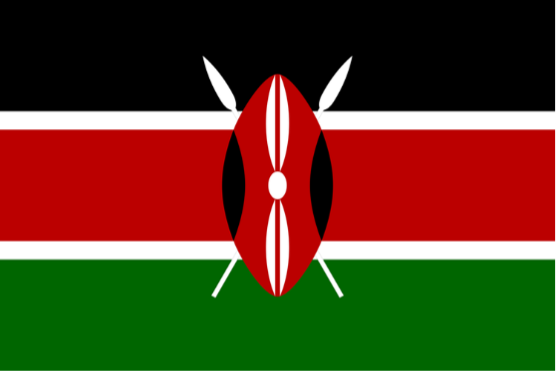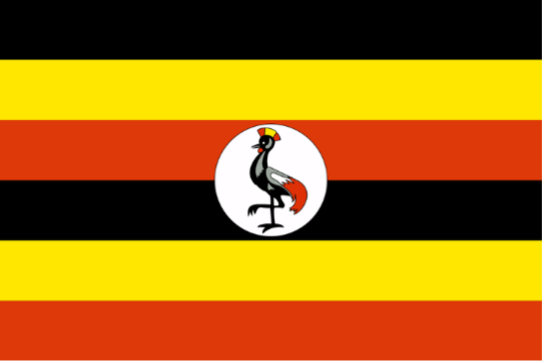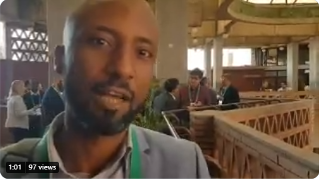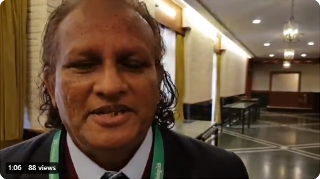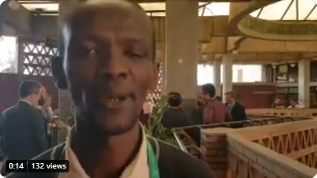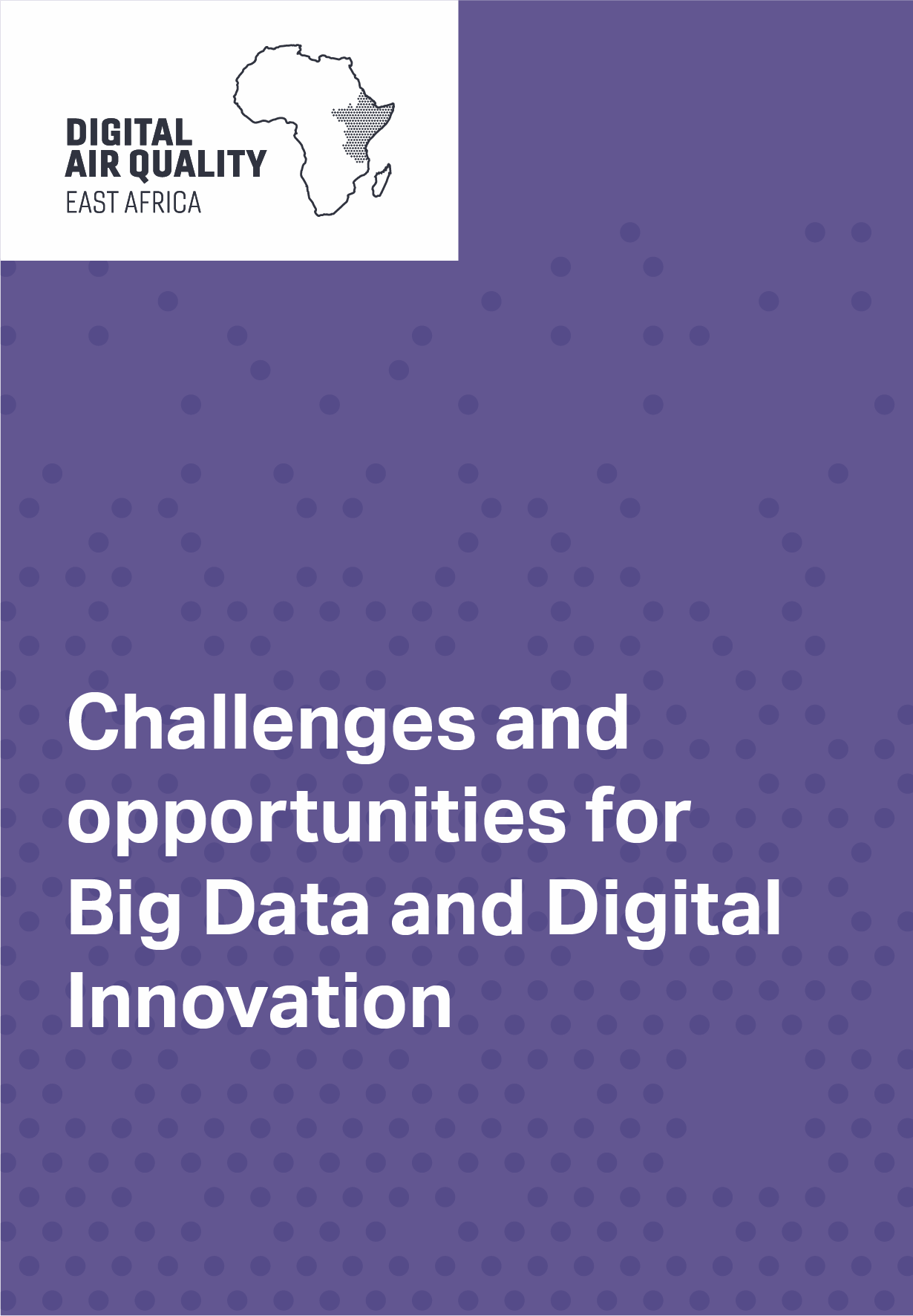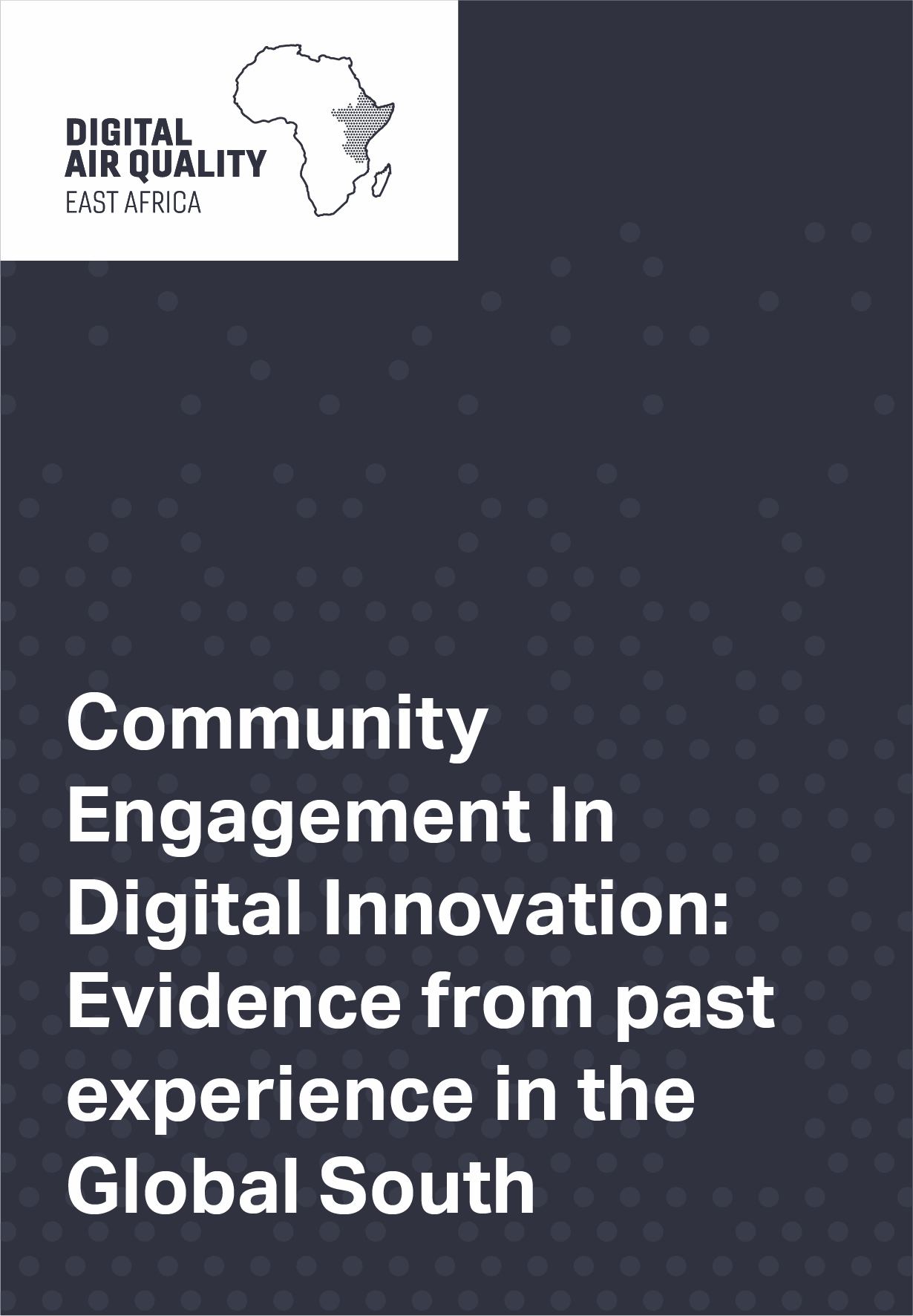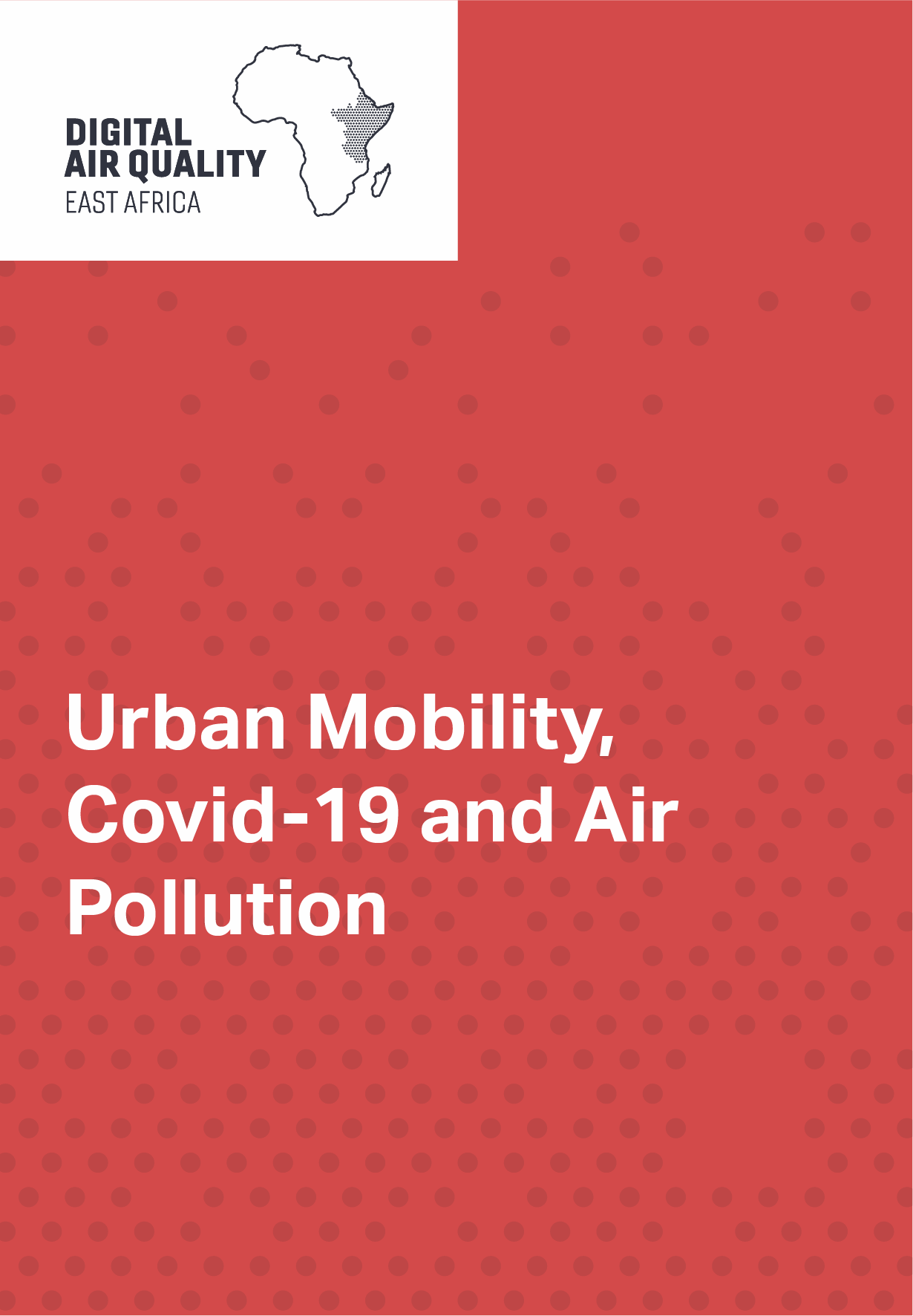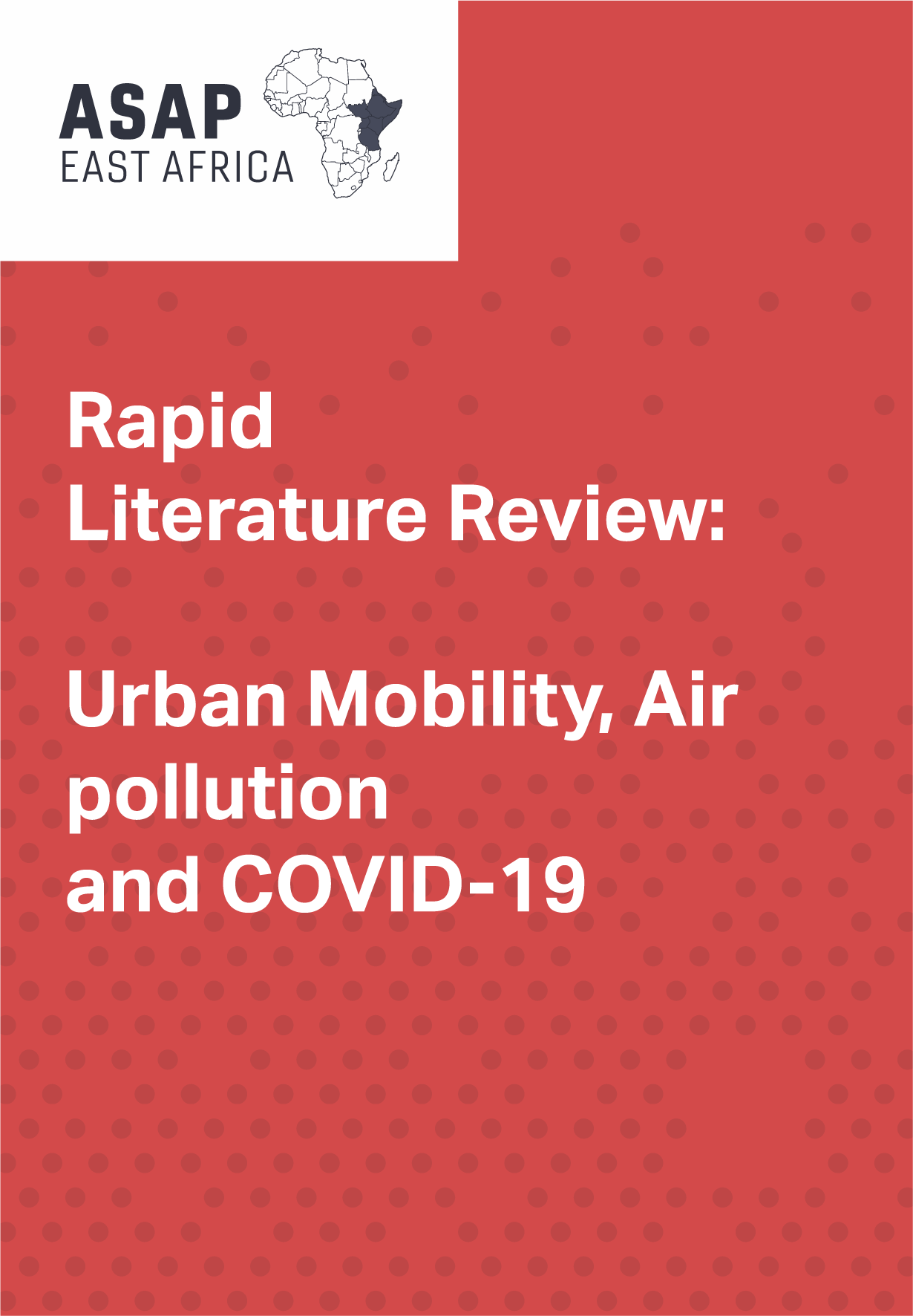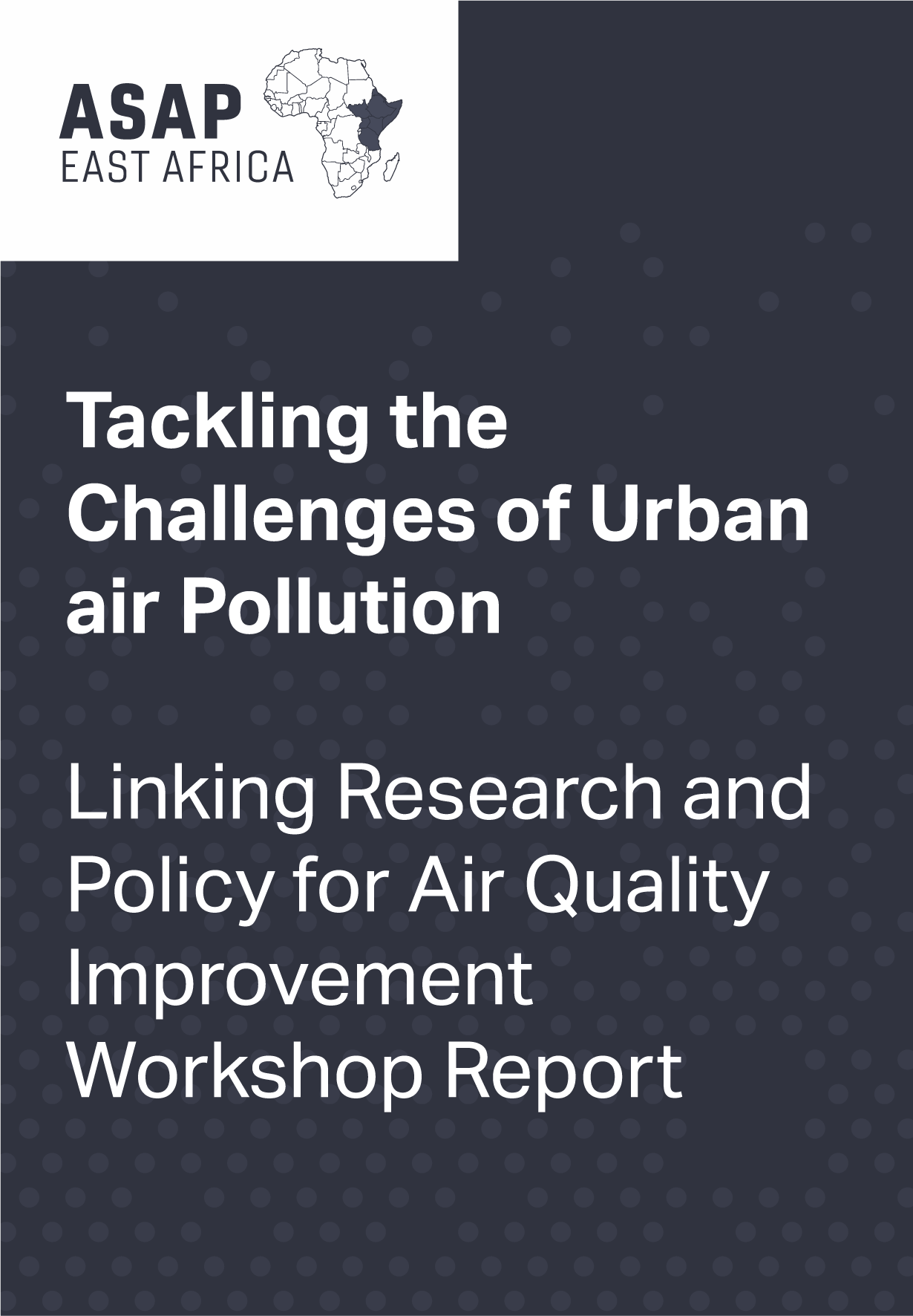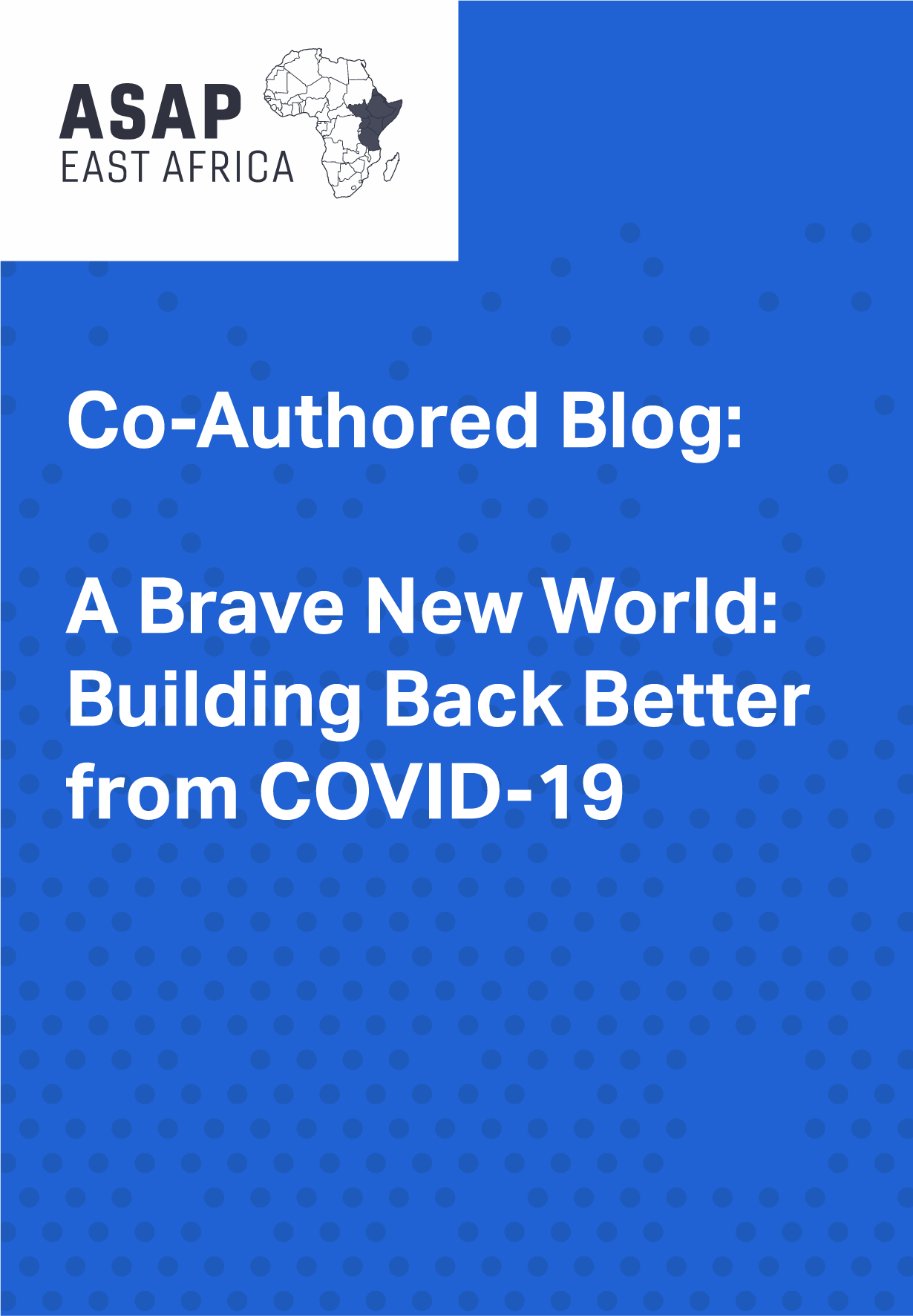
The ‘A Systems Approach to Air Pollution - East Africa’ (ASAP-East Africa) brings together leading UK and East African researchers in air pollution, urban planning, economic geography, public health, social sciences and development studies to provide a framework for improved air quality management in East African cities.
This timely and responsive programme of activity will enhance local decision-making abilities to improve urban air quality, reduce the effects of air pollution upon human health, and allow for sustainable development to proceed without further deterioration in air quality. Central to the project’s aims are strengthening research capabilities and technological expertise in East Africa, with local stakeholders and experts involved in the conception, implementation, and uptake of the programme and its outcomes.
To deliver on this ambition, ASAP-East Africa conducted scientifically rigorous research in the cities of Addis Ababa (Ethiopia); Kampala (Uganda) and Nairobi (Kenya). The main research objectives overarching the project are listed below. These overarching objectives are complimented by Work Package (WP) specific research questions:
study urbanisation trends and their impact on air quality;
develop robust and cost appropriate approaches to monitoring air pollution;
generate a holistic evidence base on the causes, consequences and levels of air pollution;
identify and engage with locations and communities which are most vulnerable;
identify social, environmental, policy and management measures to tackle air pollution;
understand the dynamic political economies of focus cities and how these influence urban governance and air quality management;
raise awareness of air pollution problems and impact policy uptake.
Background to Research
Urban air pollution is a pressing and multi-sectoral development challenge, representing a major health, economic and social threat to cities of the global north and south. Poor air quality acts as a brake on development through increasing market costs including higher expenditure on health, loss of labour productivity, the impact of illness on education, and reduced agricultural yields. It also leads to greater non-market costs by increasing disutility of illness and mortality.
Due to its different sources and removal processes, air pollution concentrations in cities, and the surrounding peri-urban and rural areas, are highly heterogeneous with implications for health inequalities that are influenced by demography, social inequities, location and employment. The Lancet Commission (2017: 15), drawing on the Global Burden of Disease study (2015), estimates annual global deaths due to air pollution risk factors at between 5.7-7.3 million - equivalent to one in ten of deaths.
This figure is equal to the death toll associated with AIDS, malaria, tuberculosis, child and mother malnutrition, road accidents and war and murder combined (see figure 2). However, this burden of death due to air pollution is still generally overlooked compared to other causes.
Figure 2: Estimated Global deaths by cause in 2015 (millions) Adapted from Lancet Commission (2017:15)
The economic cost of air pollution is also significant. According to the World Bank, with more lives lost and higher costs each year, air pollution is a challenge that countries cannot ignore. They estimate that the cost of premature deaths to the global economy in foregone labour income each year equates to $225 billion (World Bank, 2016: xiii).
In the context of the ASAP-East Africa project, air pollution is understood as a leading cause of morbidity and mortality in East Africa, however, the evidence base of its causes and effects in the regional context is currently insufficient. In East Africa, the multi-scalar and interdependent nature of urban air pollution (indoor-outdoor) presents a complex landscape for air quality studies. Better data and monitoring techniques, increased community awareness at all levels, combined with strong air pollution regulation and management of synergistic transport, land use management and urban planning strategies at this stage of East Africa’s development have the potential to generate sustainable frameworks that encourage economic growth and create more liveable environments, whilst not jeopardising the health of its population (Kilroy, 2015).
The ASAP project supports the UK Department for International Developments (DFID) East Africa Research Hub (EARH) by providing high quality, interdisciplinary research and generating evidence on the causes and effects of air pollution in three rapidly developing East African cities (Addis Ababa, Kampala and Nairobi). Synthesis of the outcomes from these three cities will allow for knowledge translation to other cities in the region. Furthermore, whilst this project focuses on understanding and addressing air pollution in urban areas, ASAP-East Africa also provides a holistic understanding of how flows of people, goods, money, information and wastes, link urban to peri-urban and rural areas. The role of different sectors (e.g. manufacturing and agricultural) in these regions upon air pollution in urban areas is thus also to be investigated. The project explicitly adopts a ‘city as system approach’ which allows the underlying practical, political, social and institutional drivers of air pollution within urban spaces to be studied in an integrated way.
The project will build upon previous DFID funded work on urbanisation (such as the Urban Africa Risk Knowledge led by King’s College London) and provide a new research direction for DFID with which to tackle the causes and effects of air pollution in East Africa. A range of project outputs including learning outputs (reading packs) reports (urban profiles, vulnerability scoping studies) interactive discussions (webinars) and public events, will enable dissemination and uptake amongst diverse audiences in East Africa (see annex 4 for an overview of output types being developed). 5
to tackle the causes and effects of air pollution in East Africa. A range of project outputs including learning outputs (reading packs) reports (urban profiles, vulnerability scoping studies) interactive discussions (webinars) and public events, will enable dissemination and uptake amongst diverse audiences in East Africa (see annex 4 for an overview of output types being developed).
Country Projects
Outputs
Throughout the ASAP-East Africa project, researchers have actively sought to broaden the impact of our research in a number of ways. This included partnering with additional organisations who could act as interlocutors with hard to reach groups, undertaking communication efforts to ensure uptake of research and striving to be innovative in the execution of research. In what follows we provide a snapshot of some these initiatives.
Community engagement and sensitisation
The ASAP-East Africa project has sought to balance engagement with policy makers alongside community outreach and sensitisation. In its broadest framing, community engagement refers to involvement and participation in an organisation, intervention or project for the welfare of the community. It has emerged as an essential component of policy design, implementation, project governance, delivery, monitoring and evaluation. Community engagement has been defined as: the process of working collaboratively with and through groups of people affiliated by geographic proximity, special interest, or similar situations to address issues affecting the well-being of those people. It is a powerful vehicle for bringing about environmental and behavioral changes… It often involves partnerships and coalitions that help mobilize resources and influence systems, change relationships among partners, and serve as catalysts for changing policies, programs, and practices.
To deliver on this ambition, ASAP-East Africa partnered with a number of key civil society organisations in Kenya, Kampala and Ethiopia who acted as interlocutors with the broader community. These were additional to the civil society organisations involved from the outset of the ASAP project. By partnering with such organisations, the ASAP research team were able to disseminate their findings beyond traditional academic or policy focused stakeholder for a.
Table 4: Civil Society Partners Engaged with
Engaging Kenyan youth: Moi Avenue Primary School
ASAP-East Africa recognises youth as agents of change. Throughout the project, the research team has actively sought to engage young people through the provision of information. A team from the Universities of Nairobi and Birmingham partnered with Moi Avenue Primary Schools environmental club to undertake a study of air pollution exposure indoors and outdoors. Not only did the project provide teachers and students with information on air quality within the school, it also provided an opportunity to expose students to the importance of science and technical education. Moi Avenue is primarily attended by students from low income backgrounds, the research project exposed students to leading African academics (see image 1 and Prof Gatari discussing air pollution at the school). Prof Gatari also organised a visit of primary school students to the University of Nairobi.
The engagement highlighted the importance and benefit of engaging schools as agents of change as well as the role that academic research projects can play in engaging young people in STEM subjects.
Image 1: Prof Michael Gatari (University of Nairobi) presenting on the health impacts of Particulate Matter to Moi Avenue Students.
Image 2: Moi Avenue Environmental Club visiting the University of Nairobi
Engaging Residents of Informal Settlements (Kibera, Nairobi)
In 2019 and 2020 the ASAP-Researchers alongside partners from Kounkuey Design Initiative (https://www.kounkuey.org) and University of Nairobi representatives co-convened two focus group discussions in Kibera exploring Community led air quality monitoring in Kibera, an informal settlement within Nairobi, Kenya.
In July 2018, 30 000 resident’s homes were demolished in an initial clearance project to make way for a new road to be constructed, splitting Kibera in half. The new bypass, in construction at the point of writing of this report, will connect two of Nairobi’s busiest roads, the Ngong and Lang’ata roads with a length of over 2.5 km going through Kibera. The new road will generate greater air pollution emissions in close proximity to Kibera and hence the residents of Kibera will very likely have greater exposure to air pollution, both during the construction phase and upon completion.
The focus group discussions explored the impacts of the new road on the residents of Kibera. In particular the negative environmental impacts were discussed within the three themes:
Community understanding of the causes and effects of air pollution
Community engagement with the research program
Community strategies to reduce air pollution exposure
Engaging Residents of Informal Settlements (Namuwongo, Kampala)
In February 2020 the ASAP-Researchers alongside partners from Kampala Capital City Authority, Makerere University, the African Centre for Clean Air, ACTogether and EASE Women’s collective co-convened a community dialogue to provide feedback on Household Air Pollution and Household Fuel Transition studies that community members had been engaged in, and to provide an opportunity for the community to reflect on findings and advise on next steps. A theme of this dialogue was the need for the community to be active participants in, rather than passive recipients of research and the importance of understanding the acceptability, affordability and availability of air pollution solutions. See blog (Okello and Avis).
The community dialogue provided an opportunity to solicit feedback from community members and to share knowledge of air pollution. It also provided an opportunity to bring together a multi-stakeholder platform that allowed government officials, academic researchers, civil society groups and local enterprises to engage with community groups in honest and open dialogue to identify strategies for collective action on air pollution.
Image 3: Community engagement facilitated by ACTogether in Namuwongo
Image 4: Community engagement competition (guess the air pollution level)
Innovation
Innovation in the execution of research is a theme that ASAP-East Africa have been exploring throughout the project. Researchers acknowledge that for issues to resonate with non-academic audiences, efforts must be made to present information in novel and imaginative forms. This theme has been developed and is being elaborated in the ASAP-East Africa successor project Digital Air Quality – East Africa (DAQ-East Africa)
App development
Mobile phone usage has proliferated across East Africa with phones emerging as the dominant tool with which people access, engage with and share information. Data enabled devices are proliferating and an increasingly tech driven society is evident across focus countries. To tap into this, ASAP-East Africa collaborated with a UK civil society organisation – British Open Media (BOM) – to develop an app that allowed individuals to access information on personal exposure to air pollution in an imaginative and informative manner. The app allowed data on air pollution levels to be presented on screen. It is hoped that such apps can be deployed to transform personal exposure from an abstract ideas into one that is tangible. The app takes an augmented reality photograph of the viewers with the surrounding air pollution situation visualized going into their lungs.
Figure 5: Self Air App
Figure 6 & 7: Self Air App being used in Addis Ababa
Communication
ASAP-East Africa sought to deploy innovative means of engaging partners and communities in research. This included multiple modes of communication and engagement. In Addis Ababa, researchers partnered with Anbessa Bus Company to undertake research on public transport and at transport hubs. The Vulnerability Scoping Study provided a means to understand exposure and communicate the risks to transport providers as well as allowing the open discussion with stakeholders often ignored in the research process. Alongside this research, ASAP researchers partnered with BOM and Anbessa and developed and deployed a poster campaign at bus stations across the city to highlight research and broker discussion with the wider public.
Image 8: Deployment of ASAP posters in Amharic at bus stations Postcards
Alongside the above poster campaign, BOM also developed postcards to engage with the wider public. Participants where asked three key questions:
What do you think about air pollution?
What action should be taken to address air pollution?
Who should address air pollution?
A total of 63 postcards were completed and collected. An analysis of the perceptions of air pollution was possible using the qualitative data received on the postcards, and will form the basis of a forthcoming publication.
Art – Science Engagements
The Air of the Anthropocene project was a collaboration between digital artist Robin Price and Professor Francis Pope. The work uses experimental photography to visualise the amount of hazardous fine particulate matter (PM2.5) present in both the inside and outside air. The air pollution was visualized as dots of light in front of city scenes. The collaboration has been highly successful. The artistic interpretations of atmospheric contamination create great engagement with all levels of stakeholder. The outputs were easily translatable to and scalable by image sharing platforms such as Facebook, Instagram and Twitter, further increasing their reach.
Image 9: Representation of Indoor Air Pollution Addis Ababa (courtesy of Robin Price)
Image 10: Representation of Outdoor Air Pollution in Addis Ababa (courtesy of Robin Price)
Talking Head Videos
Throughout the ASAP-East Africa project, the research team has sought to share information through a variety of mediums, including social media. Talking head videos have been used to provide an entry point for users to engage with research in short informative interviews. ASAP have generated 15 videos including those produced by policy makers, NGOs, civil society actors and academics. Below are exemplars from academics (Bikila Wodajo, Addis Ababa Institute of Technology; Jacquie McGlade, Strathmore University and Jackie Klopp, Columbia University), Civil Society (Imogen Martineau, Clean Air Fund; Ray Kancharla, Save the Children and Prarthana Borah, Clean Air Asia) and Policy Makers (Jake Thrush, Transport for West Midlands; Victor Nthusi, United Nations Environment Programme; and Dipankar Chakraborty former British High Commission). To date videos have been watched a total of 2,528 times.
Image 11: ASAP-East Africa talking head videos (click and play)
Flagship events
Air pollution is a global challenge, afflicting countries across the global south and north. Whilst the nature and extent of air pollution is a product of unique social, political and economic factors, benefit is accrued from engaging with stakeholders from different contexts and backgrounds. To this end, the ASAP-East Africa and sister project ASAAP-India organised a global conference in Delhi involving over 200 participants. This brought together research partners from East Africa alongside the counterparts from south and south east Asia. An outcome of this event was the forging of connections between Indian researchers and East African actors including a Memorandum of Understanding between the Uganda National Roads Authority and the Indian Institute of Technology Delhi.
The event was attended by representatives from the international development community (World Bank, WHO, UNEP), UK government (British High Commission), academia and civil society (Save the Children, Population Council, Clean Air Asia etc.). For full details see workshop report below.
Image 12: Tackling the Challenges of Urban Air Pollution Workshop Report
Image 13: Workshop Photos
Reflexivity
COVID-19 is a human tragedy that has irrevocably impacted on the day-to-day lives of vast swathes of humanity. At points over the last few months it is estimated that restrictions on day-to-day life affected roughly half of the global population, impacting on everything from transport, commerce, social gatherings, and the ability to leave one's home or to earn an income. As decision makers cautiously plan for a relaxation of current policies, it remains to be seen how society will emerge given the ongoing search for a vaccine. Indeed discussions of how to enforce social distancing in schools, on public transport and in workplaces are requiring a drastic rethink about how societies and economies function.
Concomitantly, the disruption caused by COVID-19 has brought into sharp the relief the impact societal activities have on the environment. Reports abound of nature reclaiming our cities, of fish being seen in Venetian canals, of Mount Kenya being visible from Nairobi for the first time in decades as visibility improves and of the sky over many cities seeming a deeper shade of blue.
One direct impact of COVID-19 and response measures has been a significant reduction in levels of air pollution across many cities. It is reported that as lockdown measures have been enforced, levels of air pollution in Kampala (Uganda), Delhi (India) and Birmingham (England) have seen significant reductions. Whilst each city is unique, a number of factors have contributed to declines including restrictions on our ability to travel, changes how we move and changes to how and where we work. It is also important to note that more research is required to fully understand the nature of air pollution reduction and the contribution transport restrictions have made. To capture learning around this issue, the ASAP team organised the following:
A rapid literature review to ex explore Urban Mobility, Covid-19 and Air Pollution focussed on Kampala, Delhi and Birmingham.
A Webinar involving representatives of academia (Makerere University / AirQo), civil society (Clean Air Asia) and policy makers (Transport for West Midlands) to discuss how Covid-19 lockdowns have impacted on air quality in different contexts and from different perspectives.
A co-authored blog to capture the key messages from the webinar. This partnered a representative of the AirQo project (Makerere University) and the University of Birmingham.
Image 14: ASAP-East Africa Webinar and outputs exploring COVID-19 and air pollution
Impacts
The ASAP team are also core partners of a number of regional initiatives including:
Dan W Programme (Columbia University)
Solomon Programme (NCAR)
Africa Air Quality Assessment (SEI/UNEP)
Outputs Published and Forth Coming:
A key element of the ASAP and DAQ projects was the provision of spaces and places of discussion and debate and the exploration of ways and means of synthesising and translating knowledge for stakeholders. To this end we executed the following recent events:
Webinars:
A number of high level Webinars were organised on the following themes, involving representatives of government, the private sector and civil society:
Urban Mobility, Covid-19 and Air Pollution
Sentiment, Perception and Air Pollution
ASAP and DAQ researchers have also moderated discussions during EU Green Week for the International Organisation for Migration
Reports:
A number of recent rapid reviews have been generated on the following topics.
Challenges and opportunities for Big Data and Digital Innovation
Community Engagement In Digital Innovation: Evidence from past experience in the Global South
Urban Mobility, Covid-19 and Air Pollution
ASAP and DAQ researchers are also supporting the UKs Foreign, Commonwealth and Development Office to better understand the causes and consequences of air pollution as well as the potential of different types of interventions, of particular interest may be a forthcoming report on Electric Vehicles and past reports on Climate Change and Air Pollution and Interventions to address air pollution
Reading Packs: Alongside the above we have generated a series of introductory reading packs on the following themes:
Please see below a selection of our project outputs:
Big Data and Digital Innovation
Community Engagement in Digital Innovation
Journal Articles in Development: We are generating a range of academic outputs on the following areas:
Mini Projects:
We were also able to undertake several mini projects and plan to hold a community engagement event where we will share our outcomes, we will be sending out invitations in due course. Projects included:
Air Quality Geo-Platforms in East Africa
Nairobi Metropolitan Air Quality Management Framework
Personal exposure to air pollution
Piloting a network of communities as technology partners in air quality monitoring in Kampala – please confirm the actual title, there doesn’t appear to be one on their PowerPoint but this was taken from their proposal document
Understanding spatio-temporal patterns in health effects of air pollution in East Africa
Next Steps
ASAP/DAQ researchers are keen to continue the partnership and are actively engaged in a number of initiatives across East Africa. A key focus of these initiatives is to ensure the impact of activities. We are particularly keen to better engage the public and private sector as well as civil society to understand their research needs and to ensure that they are supported in their green transition initiatives.





